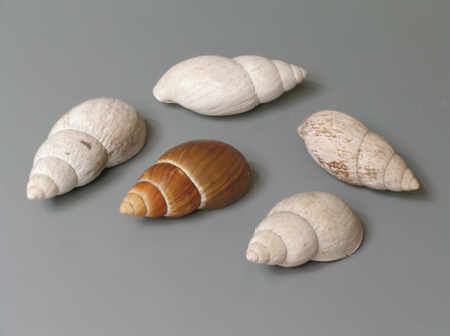|
The Treaty of Waitangi was signed by William Hobson as Queen Victoria’s representative for the British and approximately 45 Maori chiefs, men and women on February 6th, 1840. According to The Rough Guide to New Zealand, the Treaty states – The Queen guarantees the chiefs the “full exclusive and undisturbed possession of their Lands and Estates Forests and other properties which they may collectively or individually possess” This was expressed in English in terms of individual rights over property. Thus even though the land was sold or transferred out of the hands of the Maori people, they still felt that they had guaranteed a collective right to the land and its traditional resources under the terms of the treaty. This mis-translation, or misunderstanding, has resulted in a large number of recent and current claims to the Waitangi Tribunal. One of these claims is over the remaining populations of the Native Flax Snail, Pupuharakeke. The Native Flax Snails, or Pupuharakeke, had a special role (as a kaitiaki or guardian) within the traditions of the indigenous Iwi (or Maori communities) of New Zealand. Tradition amongst the people of the Northland states that the Flax Snails alerted the villagers to the presence of all approaching people and in particular, war parties. The Flax Snail is said to feed on, and climb, the leaves of the Native Flax, Linum species. Historically they occurred in fairly large numbers in some areas of the Northland. Sensitive to vibration, the Pupuharakeke react to any disturbance in an area by retreating into their shells. The sound of hundreds of receding snails thus alerted the local people to the presence of visitors or, indeed potential threats. Two species, Placostylus ambagiosus Suter, 1906 and Placostylus bollonsi Suter, 1908, and numerous subspecies, at least five of which are now thought to be extinct, have been recorded from New Zealand. I would like to thank the Director of the Whangarei Museum & Heritage Park, Linda Wigley, and in particular Jade Baker, for all their help in establishing the true story behind the Pupuharakeke claim. |
Photo: Large numbers of old dead shells of Placostylus ambagiosus Suter, 1906 occur in museum collections in New Zealand. © Photographs reproduced by kind permission of Linda Wigley Director Whangarei Museum & Heritage Park, North Island, New Zealand |
The Pupuharakeke or New Zealand Native Flax Snail - The Pupuharakeke and the Treaty of Waitangi
Issue
14
Page
20

